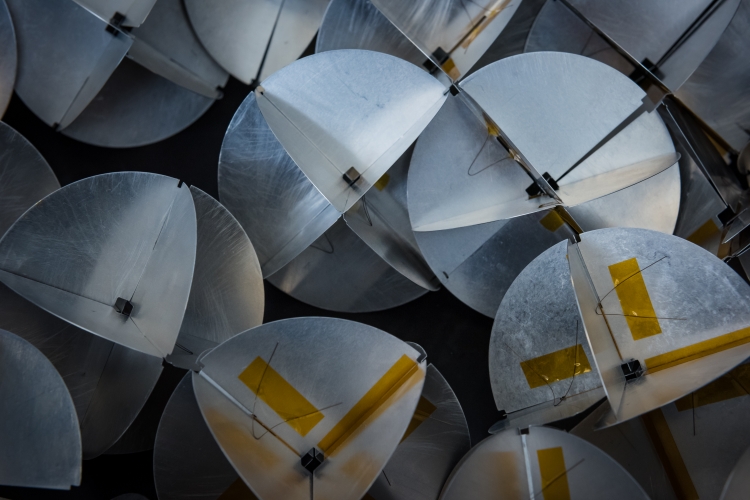The AeroCube-10 dual CubeSat mission, packed with space experiments and technology demonstrations, was launched into orbit from the Cygnus automated cargo spacecraft after its recent departure from the international space station.
Possibly the most intriguing experiment aboard the Aerospace-funded spacecrafts was designed in-house at Aerospace and consists of hardware for a never-before-done mission. The hardware is a dispenser with a set of 28 atmospheric probes, releasable one at a time on command. These lightweight circular probes unfold into three orthogonal 98 mm diameter disks and weigh only 16 grams. They will reenter within months and will provide sensitive in-situ measurements of the variations in the density of the Earth’s thermosphere (atmosphere from about 50 to 600 miles above the Earth’s surface), which has not been studied extensively.
The probes were the brainchild of Aerospace’s Jerry Fuller, following a hallway discussion in Chantilly with Andrew Abraham, who was working on deorbit analysis and noted that it would be good to have real-time information about conditions in the upper atmosphere. They both wondered whether CubeSats might be able to provide missing information.
Fuller gave some thought to the problem, and that afternoon came up with concept sketches for the probes. After returning to El Segundo, Fuller got together with Dr. Rebecca Bishop of the Space Sciences Department and proposed an experiment based on the concept. Later, the concept was incorporated into the AC10 project, the deployer was designed and testing ensued on the probes to ensure they functioned correctly and could be observed clearly as they returned to Earth.
Results from the probes should improve understanding of the dynamics in the thermosphere that affect orbital lifetimes, navigation and communications on Earth.
Another elaborate experiment involves payloads on both of the AeroCube-10 satellites and deals with measuring radiation that could cause degradation of solar cells in space. Each satellite contains a group of space solar cells with varying radiation shielding thickness. They will provide information on how space solar cells degrade due to charged particle radiation in comparison to the degradation predicted by current models. Next to the solar cells is a pair of radiation dosimeters that will measure the electron and proton radiation flux at various energy levels.

In addition, a device called a micro Charged Particle Telescope will measure proton, electron and heavy ion radiation flux at other energy levels that are suspected of causing solar cell damage.
And who says that scientists and engineers have to be serious all the time? AeroCube-10 will also carry a payload that is strictly, or mostly, for entertainment. A wide field-of-view camera will be used to collect photographs in all directions around the spacecraft. The photos will be stitched into a 360-degree image that can be viewed with a virtual reality headset, effectively placing the viewer in space for an awesome experience.
The AeroCube-10 pair of 1.5-unit CubeSats, each measuring 10 by 10 by 15 centimeters, are designated AeroCube-10a and AeroCube-10b. They have identical shapes and weight (within 2 grams), which will prevent them from drifting apart. This proximity allows them to demonstrate satellite-to-satellite pointing and communication and test a steam propulsion thruster aboard AeroCube-10b.
“AeroCube-10 is not only a series of technology experiments — the two spacecraft will work together to achieve goals as well,” said David Hinkley, one of the AeroCube-10 mission designers. “Cooperative missions are a strong suit for miniature satellites.”







